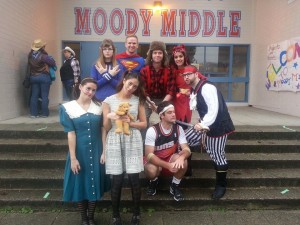Thus far we have explored multiples components of my inquiry question including it’s background, relevance, and what I did to go find the answer. So after all is said and done, what really did I learn? Was I able to find a valid explanation, or did I end up in a dead end alley with nowhere to go? Without any further rambling here’s what I was actually able to pull out of all my research and experiences.
First off I have come to sincerely believe in the magic of classroom community. As I look back on it now all the classes that I was

Community brings development
able to excel in had a very close group of individuals. I felt like I was inspired to do well because I knew that my instructor knew what I was capable of and expected that of me for each assignment. Likewise, my instructor knew how every single single student within the class was able to excel. She knew when she could hand over a little extra responsibility or when to give individuals who were struggling a slight push from behind to get them going again. It seems to me that once a strong enough community is put in place within a classroom (or even a school for that matter), students and teachers can begin to form an understanding in which both parties know the strengths and weaknesses of the other. As I mentioned before in my previous posts, these connections provide the teacher to provide the students with proper scaffolding autonomy in order to create a zone of proximal development with each of their students. This in turn inspires the student as they cultivate more and more motivation while also developing their own ability to become the self-regulated learners that we as teachers want them to be.
Furthermore, there lies an important component within classroom community that I slightly touched on before and that is the relationships that generate because of it. The relationship between a student and his/her teacher should create a security within the classroom in which the student can thrive. For example, if the student has a trustworthy relationship with a teacher, that allows the student to be at ease knowing that the teacher can identify with their own level of understanding. Similarly, the teacher also knows what the student can handle as well as their level of proficiency in tackling assignments. As I mentioned before this enables the instructor to create developmentally applicable lesson and activities in which the student either needs scaffolding or to be let off on their own.
Based from my own experiences and from what I’ve discovered through research, I am a firm believer that in order to correctly and proficiently develop your students you must have a sense of relations with each of them. This in turn will fashion community even furthering the student’s own feelings of security, self- motivation, and regulation.
